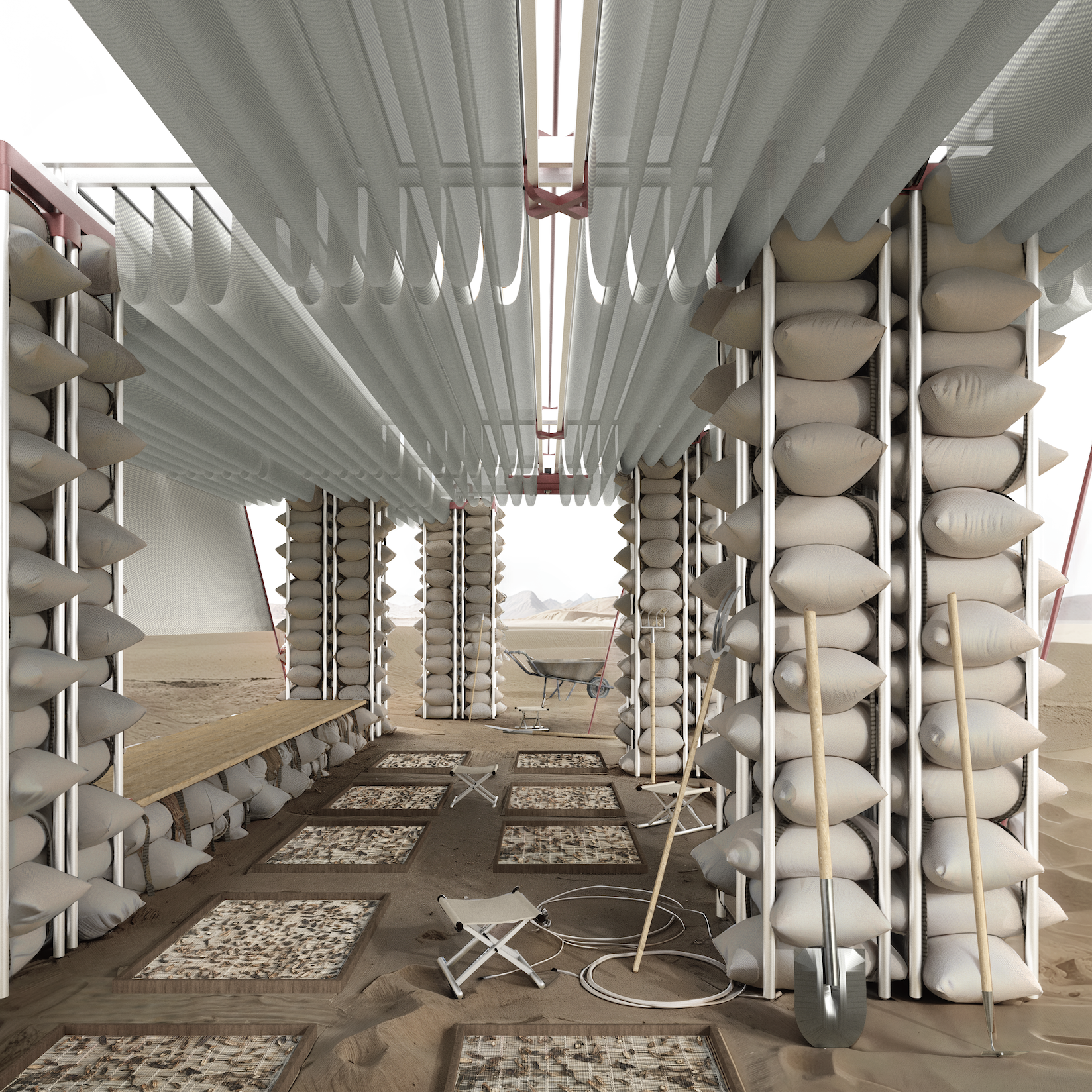
Nomadic Permanence
Design Proposal
Princeton University Master of Architecture Post-Professional Thesis
By Yuanyuan (Yuki) Cao
Nomadism and permanence, often perceived as opposing practices, instead exist in dynamic tension, shaping landscapes and livelihoods in complex ways. On the Qinghai-Tibet Plateau, Ke’er Village grapples with severe desertification and economic stagnation—challenges countered by the region’s nomadic herders through ecological restoration and sustainable economic practices. By planting Saxaul Trees to stabilize shifting sands and cultivating the medicinal plant Cistanche, they demonstrate both ecological restoration and income generation through the practice of Nomadic Permanence.

“Much like the landscape interventions that gradually cultivate stabilization from shifting sands, this approach reveals how architecture could take on a “becoming” quality, mediating between the forces of nature and the needs of its inhabitants and creating spaces that balance transient nomadism with permanence.”










